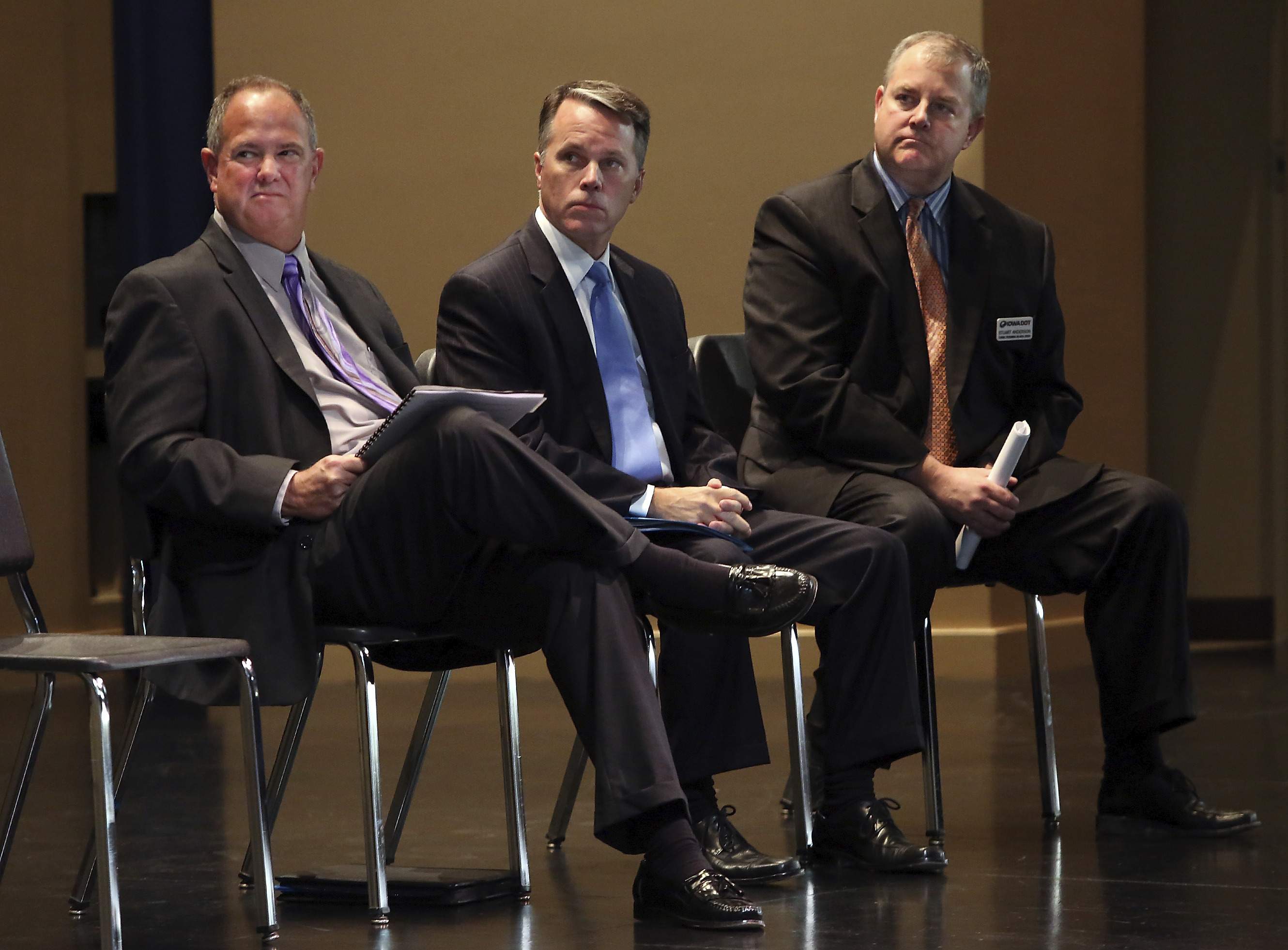
MOUNT PLEASANT, Iowa — The future of transportation across the region is arriving at a pace quicker than many might think.
And the infrastructure must be ready when that future gets here.
“Fifty percent of all vehicles will be fully automated in the not-too-distant future,” Illinois Director of Transportation Randall Blankenhorn told Friday’s turnout for the Tri-State Development Summit at Iowa Wesleyan University.
Stuart Anderson, the director of planning, programming and modal division for the Iowa Department of Transportation, echoed Blankenhorn’s statement and said the first wave of automated vehicles might be hitting the highways as quick as the early 2020s.
Anderson also said he was familiar with a fully autonomous fleet of semi-trucks that are in the experimental stage and have even made some long-distance hauls.
Upgrades in highway-related technology will be needed to handle such a transportation conversion.
Blankenhorn said Illinois’ transportation technology needs a major upgrade in many areas and is confident that will be accomplished in the coming years. At one time, he said Illinois was at the front of such technological advancement but is now sorely lacking.
“The (Illinois Department of Transportation) used to be the most innovative — and we will be again,” he said. “It’s about creating a culture of innovation. We cannot be afraid of technology. The technology is here, and we have to have the guts to use it.
“Transportation drives the economy. It’s brought us where we are, and it’s where it will take us tomorrow.”
Blankenhorn said the IDOT’s technological overhaul will soon be seen. For example, the state is planning to employ drones to handle bridge inspections soon, probably in the coming year.
A variety of technological innovations, including advanced electronic driver assistance signs and new-age machinery designed to clear more snow at a faster pace and with less manpower, are right around the corner, Missouri Director of Transportation Patrick McKenna said.
“Information technology is changing the transportation industry,” McKenna said. “Transportation is the heartbeat of everyday life. We have to look ahead.”
Innovative highway designs are also beginning to be rolled out. One change McKenna said is in the works will give new highway interchanges different look exit and entrance ramps. Fueling those types of changes is added emphasis on safety.
“We should not be reconstructing our current roadway system,” he said. “We should be looking to the future. We must use the technology available today when planning for the future.”
Transportation enhancements, particularly in highway construction, do not come cheap.
“Funding is absolutely critical,” Blankenhorn said. “It’s hard to build highways without money.”
Transportation leaders told people at the Tri-State Development Summit to watch for collaborations in the future involving local, state, federal and private partnerships in all areas of infrastructure improvement.
Herald-Whig Publisher Thomas A. Oakley, a longtime driving force in the Tri-State Development Summit’s transportation task force, underlined the importance of a strong highway system.
“Transportation is always a key to the region’s economic development,” Oakley said.
The transportation task force dates to 1997, when it established a goal of adding 1,677 miles of four-lane paved highways to the Tri-State area. That figure is now 366 miles shy of completion.
Mississippi River transportation is also vital to the region’s commerce.
“We used to think the river separated us, but it actually brings us together,” said Chuck Scholz, a former Quincy mayor and a member of the Tri-State Development Summit steering committee. “Our river connects us to each other — and the world. A common transportation network is the lifeline of the (counties in the region).”
[Source:-Herald Whing]




